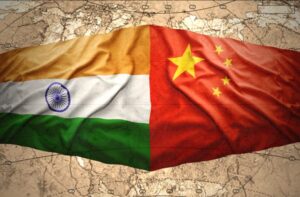GS3 – Indian Economy

Context:
As India steps into its third term of economic governance, trade policy has become a key priority. While multiple bilateral trade agreements (BTAs) are being pursued, a critical missing element is a clear and coherent China strategy.
India’s Trade Push: Opportunities and Gaps
Suboptimal Growth Trajectory
- Despite reforms like the PLI (Production-Linked Incentive) scheme, India’s GDP growth averaged 6.2% (2014–2025) — well below the envisioned double-digit growth.
Shift Towards Trade-Led Growth
- India is advancing trade deals with countries like the UK, U.S., and EU, aiming to boost exports and manufacturing.
Regional Disconnect
- India remains disconnected from East and Southeast Asian production networks, especially those integrated with China, which are essential to global value chains.
China Strategy Deficit
- Trade agreements alone cannot substitute for the lack of a strategic, calibrated policy towards China, which plays a central role in global manufacturing.
Case Study: Apple in India
- Apple’s Expansion: Considered a flagship example of India’s manufacturing potential.
- PLI-Driven Growth: Apple’s production in India has increased, driven by its diversification away from China.
- However:
- 2023 Data: Apple had 156 suppliers in China, but only 14 in India.
- Global Component Hubs: China, Vietnam, Japan, and South Korea continue to dominate electronics supply chains.
- Key Lesson: India must attract global suppliers and enable smoother component flow to deepen its integration into global value chains.
India–China Trade: Persistent Dependence
RCEP Withdrawal
- India exited the Regional Comprehensive Economic Partnership (RCEP) in 2019, fearing China’s market dominance.
Growing Trade Deficit
- Despite disengagement efforts, India’s trade deficit with China rose from $53.5 billion (2018–19) to $99.2 billion (2024–25).
Inescapable Dependence
- Even with strategic caution, India continues to depend on Chinese goods, reflecting a trend similar to that of the U.S. and other nations.
Rare Earths Bottleneck
- China controls ~90% of global rare earth processing, vital for EVs, solar panels, and defence technologies.
- China’s export restrictions are already hurting India’s green energy ambitions.
Why a China Strategy is Essential for India
- Align Trade Policy with Geopolitical Reality
- China is a central node in global production. Ignoring this limits India’s trade effectiveness.
- Clarify India’s China Policy
- India needs a balanced approach combining strategic caution with pragmatic engagement.
- Revisit Regional Trade Platforms
- India should reconsider joining RCEP or CPTPP to gain better access to Asian value chains.
- Boost Investor Confidence
- Stable policies and a predictable trade environment are critical to attract long-term FDI.
- Close the Policy Certainty Gap
- Without a clear China strategy, India risks losing global investment to countries like Vietnam, Indonesia, and Mexico that offer more predictable ecosystems.




